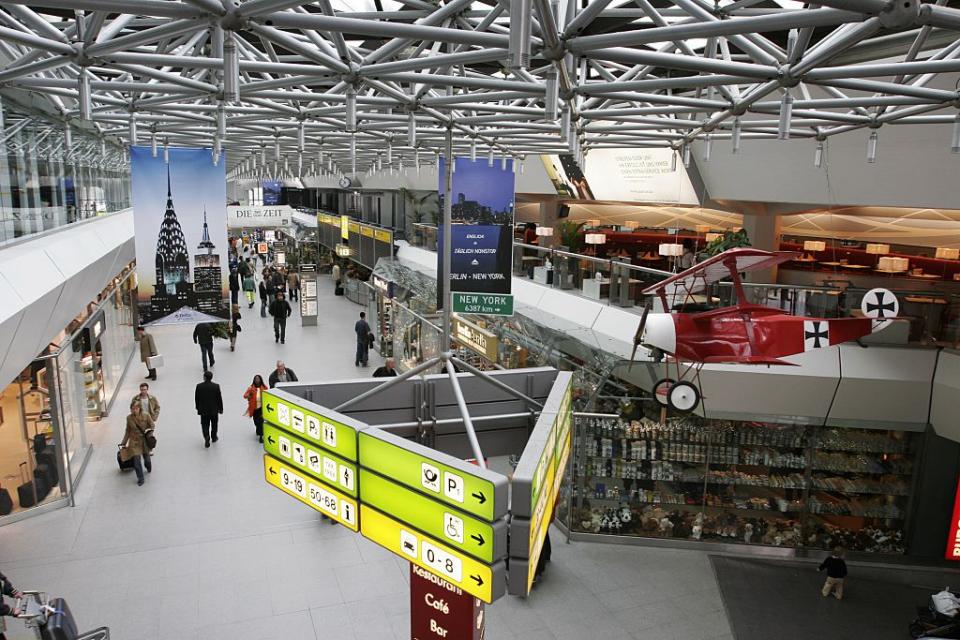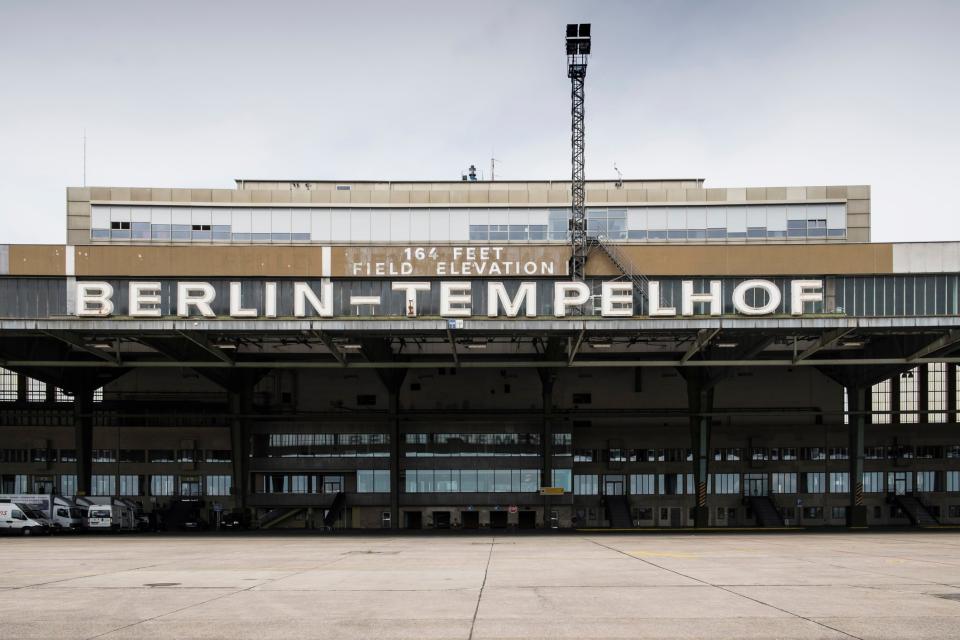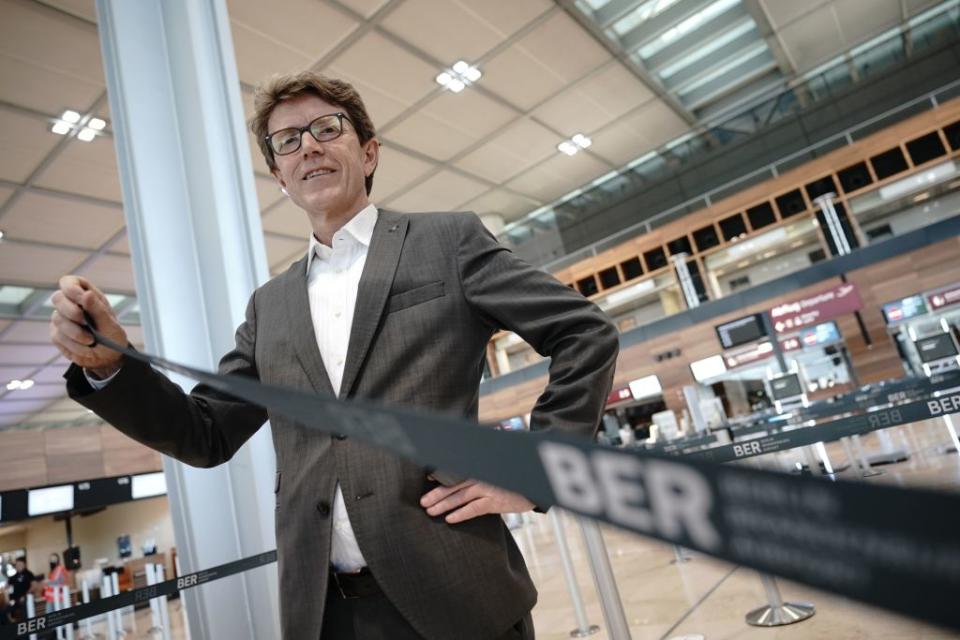Why Berlin's swanky new airport is more than 30 years in the making

At around 2pm tomorrow (1pm UK time), two planes – one flown by Lufthansa, the other by easyJet – will land simultaneously on parallel runways at the controversial new Berlin Brandenburg Airport. It will be a modest affair. Given the tortured history of the project, and the fact that the opening comes in the midst of a global pandemic that has plunged the air industry into crisis, partying on this occasion – even in Berlin – would be wildly inappropriate.
But it will be a hugely significant moment. For the city itself, and the millions of travellers who in increasing numbers have been flocking to it ever since the fall of the Berlin Wall, it will at last provide (hopefully!) a slick, modern, efficient means of coming and going. Beyond that, in aviation terms, today’s opening marks something even deeper: nothing less than the end of the Cold War.
The idea of building the new airport was born out of the heady euphoria that greeted the fall of the Wall in November 1989 and the realisation a unified city needed a very different transport infrastructure. Up to that point the two radically different halves had been served by their own airports: in the West, the quirky hexagonal-shaped Tegel in the north and the more centrally-located Tempelhof; in the East, the somewhat brutalist Schönefeld.
The airports occupied very different worlds. Tegel and Tempelhof – hugely significant during the Berlin airlift of 1948-49 – were located in the part run by the US, Britain and France and were served by carriers such as PanAm, British Airways and Air France (no German carrier was allowed to land in the city at that time). Visiting statesmen and superstars to use them included John F Kennedy and David Bowie.

Schönefeld, to the south, was where Nikita Khrushchev and other visiting dignitaries from Moscow would be greeted. Carriers here included Aeroflot and, later, because the airport lay just outside the city boundaries, the now defunct East German carrier Interflug, serving East Bloc destinations such as Warsaw, Bucharest and Budapest.
All three airports – on the cutting edge of the old Iron Curtain – had their fans. The location of Tempelhof – with its striking Nazi-era terminal – made it the most convenient, and even after closure in 2008 it remained popular as a place of leisure where you can walk, cycle or skate along the old runway.

Although not connected to the U-bahn network, Tegel’s hexagonal structure gave it slightly funky albeit dated feel and enabled a very swift journey from plane to terminal – and from there to the bright lights and bars of the Ku’Damm.
Schönefeld had the merit of being on the S-bahn (albeit a good 10-minute walk away) and proximity to Köpenick and the rather lovely Müggelsee area.
But the city has long needed a more joined up aviation system.
“OK it has been a long journey, but from tomorrow the German capital will at last be better connected to the world,” says the CEO of Berlin Brandenburg Airport (BER), Engelbert Lütke Daldrup.
He doesn’t try to minimise the problems that have beset the construction of the new airport, a catalogue of errors that have resulted in six postponed opening dates, a dramatic escalation of costs, allegations of corruption and – in Germany of all countries – gross incompetence including the building of escalators that were too short, fire doors that didn’t open and the incorrect installation of 50 miles of cables.

“We have a special history and we don’t sweep it under the carpet,” says Lütke Daldrup. “German engineers like me have felt embarrassed. That’s why there will be no big party. But we have learnt from our mistakes and we have not given up.”
The new airport, which lies 11 miles to the south east of the Brandenburg Gate and adjacent to Schönefeld, will have state-of-the-art baggage handling facilities (“10,000 pieces an hour!”), easy rail access to the city centre, and a total of three main terminals, one of which, Terminal 5, will be located at Schönefeld and will cater mainly for low-cost carriers. It will also carry the name of the former mayor of West Berlin and West German Chancellor Willy Brandt (though the family did consider at one point withdrawing consent).
Extensive testing over the past four months of every aspect of the new facility – from baggage handling and boarding to check-in and security control – has involved 10,000 people and should ensure that the opening goes ahead without any further humiliating glitches.
But the fact that it is opening during the time of corona means that passenger numbers will be light. Far from the average daily tally of 100,000 in 2019, Berlin over the past few months has been handling 20,000 to 30,000 a day. Until things pick up, only Terminals 1 and 5 will be operational. The last flight ever from Tegel is scheduled for November 8.

“We have the largest air travel crisis since the Second World War”, says Lütke Daldrup. “Not only in Germany, but in the UK, Europe, North and South America – it’s a global crisis.”
While passenger numbers in Berlin are down, they have not dropped by as much as at Germany’s two other major international airports, Frankfurt and Munich. According to Lütke Daldrup, this is because a far higher proportion of visitors to Berlin come for leisure rather than business. And in this he sees hope for recovery.
“You can have Zoom conference calls, but you cannot have digital holidays,” he says. “People want real holidays, they want the sun, they want to visit friends and relatives. Berlin is a huge touristic destination and we are sure that people will return. We think that we will be back to 50 per cent of passenger numbers by next year and fully back in three to four years. The new airport is a sign of hope.”

With so much up in the air at the moment you could say that such optimism is misplaced. Who knows how this will pan out in the months and years ahead?
One thing is for sure, though: from tomorrow, Berlin will have a new, thoroughly modern international airport. There will be a massive sigh of relief. And for visitors by plane, the city will finally have come in from the cold.
For more information on Berlin Brandenburg Airport, see ber.berlin-airport.de/vorschalt-en.html


